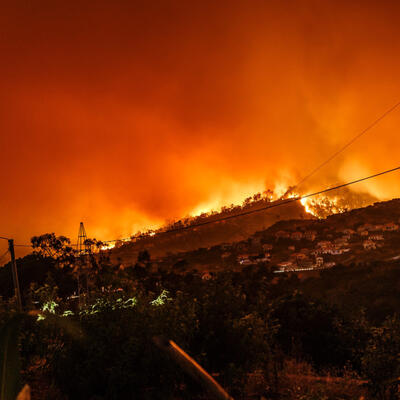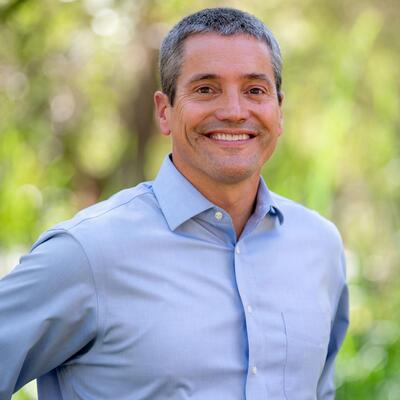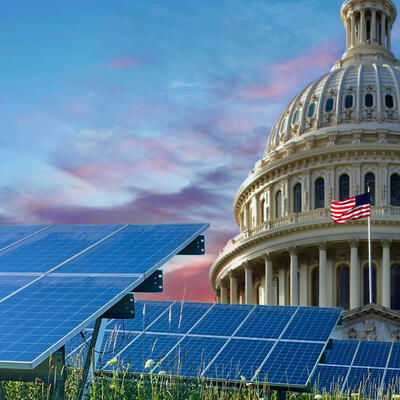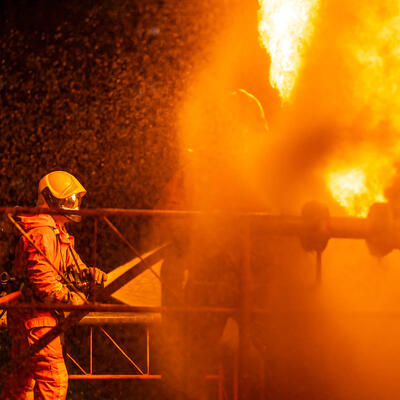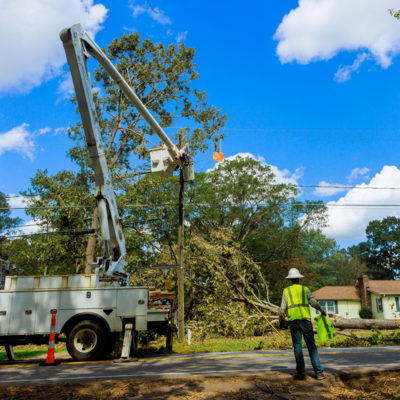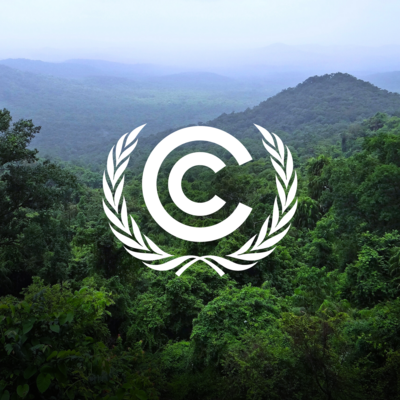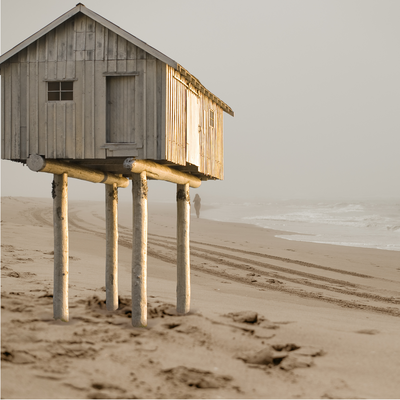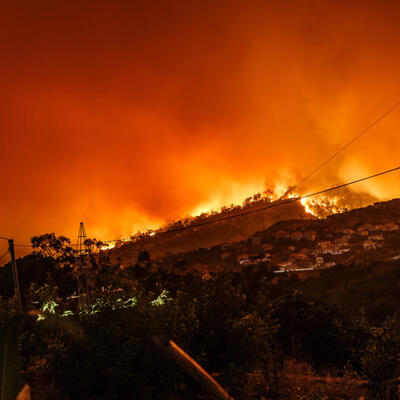
REWIND: Firefight: How to Live in the Pyrocene
Guests
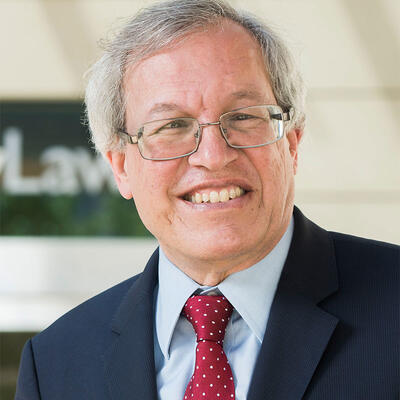
Erwin Chemerinsky
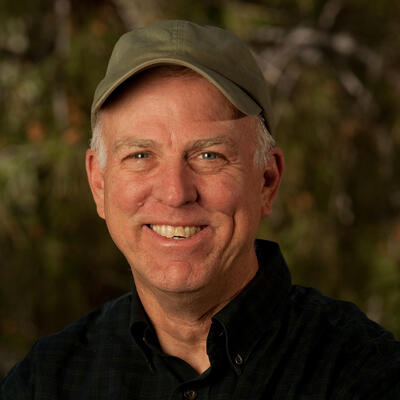
Stephen Pyne
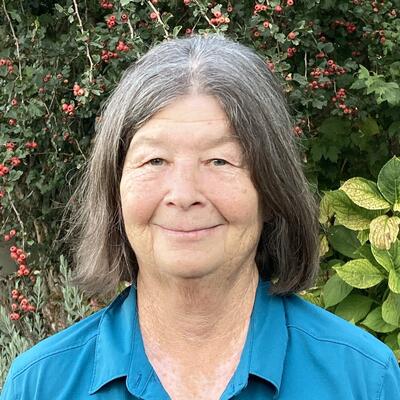
Susan Husari
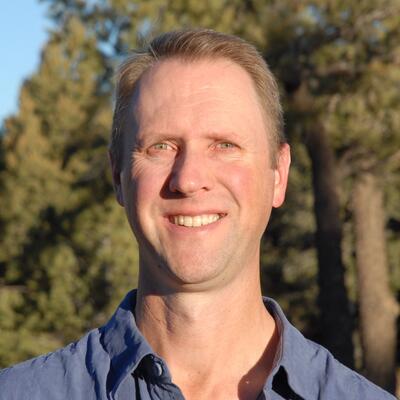
Chad Hanson
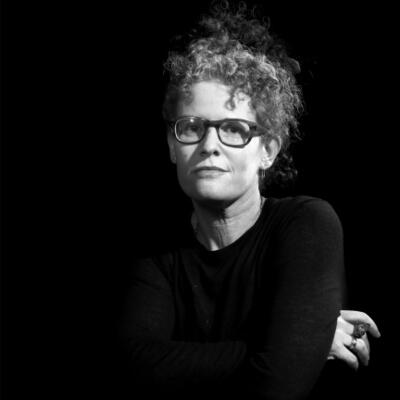
Jaime Lowe
Summary
We’re on track for yet another year of record wildfires in the western U.S., endangering lives, displacing communities, and sending unhealthy smoke across the nation.
The science is clear: human-caused climate change is making lands more conducive to burning, and we are increasingly living in flammable landscapes. Forest experts say there are tools to help reduce the risk of catastrophic fires, keep forests alive as valuable carbon sinks and make communities more resilient to megafires. But we may also have to become accustomed to more fire – and smoke – in our lives.
Susan Husari started her career in fire as a seasonal wildlands firefighter and hotshot, later taking positions in fire management with the National Park Service and U.S. Forest Service. She’s currently a member of the California Board of Forestry and Fire Protection.
“I started fighting fire in 1975. And the difference between fire behavior in the mid-70s and the fire behavior we’re observing now, because of longer burning periods and higher temperatures, drier fuels, is absolutely astounding,” she says. Fire agencies are always under pressure to put fires out, especially when they encroach on human settlements, she says, but tools like prescribed burning, forest thinning and managed lightning fires can help make some wildfires easier to control when they do occur.
Chad Hanson, an ecologist and author of Smokescreen: Debunking Wildfire Myths to Save Our Forests and Our Climate, challenges the effectiveness of prescribed burning and completely opposes any forest thinning or logging.
“People make the assumption that if you do prescribed fire it’s either gonna stop a wildfire, which really rarely if ever happens… [or] that the prescribed fire will dramatically modify the wildfire and for a very long period of time. And I think what we’re really talking about is a matter of degree,” he says, especially given that wildfires are driven mostly by climate and weather.
Husari and Hanson agree that supporting fire-prone communities to become more resilient through home-hardening and defensible space is one key strategy to living in our era of climate-driven megafires.
Stephen Pyne, author of The Pyrocene: How We Created an Age of Fire, and What Happens Next, says humans have always had a unique relationship with fire.
“We have been altering the earth, at a large scale, including the atmosphere, since the last glaciation ended. But the whole process went on afterburners when we began burning fossil fuels,” Pyne says. Our fossil fuel burning has changed the incidence and severity of fire across the globe, and as a result, even with the current megafires, we have less fire and smoke than humans used to experience. So what could a less-carbon-intensive future mean for wildfires?
“We’ve shown we can disrupt. We have to show now that we can also manage,” Pyne says. “If we get the climate situation back under control, we could expect to see a lot more fire in our countryside and certainly in our wildlands nature preserves.”
A third of the people who fight wildfires in California are inmates. Journalist Jamie Lowe takes us into this world in her book, Breathing Fire: Female Inmate Firefighters on the Front Lines of California’s Wildfires. Lowe says inmates operate similar to a free world forestry crew, except they’re more closely monitored and paid next to nothing. Despite that training and experience, it can be very difficult for felons to find work as a firefighter after release.
Lowe suggests the program could be reimagined or folded into a conservation corps or climate corps, where low-level offenders are paid minimum wage and given social services and a path to work as a firefighter after release.
In this episode, we also take a deep dive into the recent Supreme Court case West Virginia v. EPA with Erwin Chemerinsky, Dean of Berkeley Law: “What this does is open the door to challenge many things that agencies do with regard to environmental law or public health and safety or anything else by saying, this is a major question and Congress didn't give sufficiently specific guidance.”
Related Links:
The Pyrocene: How We Created an Age of Fire, and What Happens Next
Breathing Fire: Female Inmate Firefighters on the Front Lines of California’s Wildfires
Smokescreen: Debunking Wildfire Myths to Save Our Forests and Our Climate
Full Transcript
Greg Dalton: This is Climate One, I’m Greg Dalton. Before we get into the fire episode, a decision from the US Supreme Court has major implications for the federal government’s ability to confront climate disruption. For background in 2007, the Court’s 5-4 decision in Massachusetts vs EPA recognized the EPA’s authority to regulate greenhouse gas emissions. President Obama directed the EPA to do that by reigning in emissions from power plants. Then in 2016, the Supreme Court put Obama’s Clean Power Plan on hold. Trump’s plan was overturned on his last day in office and President Biden has yet to issue his own. Now, in the decision recently handed down in West Virginia vs. EPA the Court significantly narrowed the EPA’s ability to regulate heat-trapping gasses. Erwin Chemerinsky, Dean at Berkeley Law, filed an amicus brief in support of the EPA position. We asked him what the ruling means.
Erwin Chmerinsky: Chief Justice Roberts said if an administrative agency is going to act. On a so-called major question. Congress has to be very specific in the authority that it gives to the agency. He said here Congress was not sufficiently specific as to the authority to regulate greenhouse gas emissions from power plants. He said, this is a major question. Therefore, Congress, until it gives the power to the agency. Hasn't provided sufficient authority for regulation. I think this has enormous implications in the environmental area, as well as in other areas. in the environmental area could be seen that any major regulation is a major question, rarely is the statute going to be as specific as what the court would want. So this then provides a basis for challenging countless federal environmental regulations. This also extends beyond just the environmental area. Think of all of the areas where agencies have power to deal with issues of public health and safety. Or for that matter, any of the areas where agencies regulate, inevitably, there are statutes that give agencies power, any of them deal with major questions and it's so easy for the court to say, well, this statute isn't sufficiently specific.
Greg Dalton: Right. The term major questions doctrine appears more than two dozen times in the majority and concurring opinions. Was this the first codification of that doctrine? Is that really what this is about?
Erwin Chmerinsky: This isn't the first time the court has spoken of major questions. There's a case several years ago with the court referred to when it comes to major questions, Congress has to be specific in granting agency authority, but I think if you'd have talked to law professors to sophisticated experienced lawyers, To most judges, even relatively short time ago, none would've ever heard of the so-called major questions doctrine. Now it's an enormously important principle limiting agency authority in the environmental area in all areas.
Greg Dalton: Right. And, and some people would say when major questions comes up, it's really kind of a, a term, uh, for deregulation and narrowing administrative authority. Robinson Meyer in the Atlantic wrote of the decision in West Virginia versus EPA is significant for what it didn't do. It did not prohibit the EPA from regulating heat, trapping carbon pollution from existing power plants.
Erwin Chmerinsky: Well, the good news is the court did leave to the EPA, the authority to specifically regulate. Power plants and greenhouse gas emissions. They didn't close the door entirely on that. On the other hand, I think they limited the authority of what the EPA can do. And this includes precluding market based solutions.
Greg Dalton: Right. And the independent think tank, the Rhodium Group argues that while West Virginia, uh, constrains the EPAs power, it doesn't change the overall game much. And in fact, it clarifies what paths are open to the EPA. What do you think of that reasoning?
Erwin Chmerinsky: I think it's true. It does clarify for the EPA, how it can go about regulating, including greenhouse gas emissions. But I think that minimizes the significance of this case. What the Supreme Court said is whenever there's a major question, as you pointed out the court, doesn't define, what's a major question, Congress has to give the agency specific instructions of what to do. So I think what this does is open the door to challenge to many things that agencies do with regard to environmental law or public health and safety or anything else by saying, this is a major question and Congress didn't give sufficiently specific guidance.
Greg Dalton: Ah, we're gonna see lots of major questions litigation coming. So the Biden administration has been waiting to adminis to the Biden administration has been waiting to issue its own plan. Uh, while this has worked through the courts, what lawful options does the Biden administration now have to regulate greenhouse gas emissions?
Erwin Chmerinsky: I think the Biden administration does have a roadmap to what it can do. It certainly can regulate power plants within their fence lines with regard to greenhouse gas emissions. I think it's beyond that, that the Biden administration is gonna be limited, at least in less until Congress gives more specific authority to the EPA.
Greg Dalton: And it seems to be that a lot of these, uh, specific laws were. Were, uh, passed in the 1970s when climate wasn't a major concern, we haven't done major climate national policy. It seems like, uh, what the outcome of this is that, um, if climate wasn't specifically, uh, assigned as a concern in those seventies led or 80 previous legislation, then it, it's not gonna work.
Erwin Chmerinsky: That’s the real concern about what the court did in West Virginia versus EPA. The clean air act does give the EPA quite extensive authority to regulate air pollution, justice Kagan made the point in her dissent that conservatives have always wanted to stress text. Here there's textual authority, but the Supreme court says that doesn't matter because it's not sufficiently specific. So many of the environmental issues today, weren't contemplated at the time the environmental statutes were written. As you point out the clean air act, wasn't written to deal specifically with climate change, but I think the dissent is right. Why does it have to be that specific? It gives the authority to the EPA to regulate power. Why isn't that enough?
Greg Dalton: Erwin Chemerinsky is Dean of Berkeley Law. Thank you for coming on and sharing your insights on West Virginia versus EPA.
Erwin Chmerinsky: Thank you for having me.
Greg Dalton: 2021 saw a record number acres burned by wildfires across the U.S., endangering lives, displacing communities, and sending unhealthy smoke into millions of lungs. The first half of this year has seen even more blazes than the same period last year - a whopping 33,000 wildfires from January through June. And with the West continuing to suffer under the worst drought in 1200 years, the rest of the year frankly looks scary.
Greg Dalton: The science is clear: human-caused climate disruption is making lands more conducive to burning, and much of the world is increasingly living in flammable landscapes. Forest experts say there are tools to help reduce the risk of catastrophic fires, keep forests alive as valuable carbon sinks and make communities more resilient to megafires.
Greg Dalton: Stephen Pyne spent his youth as a hot-shot, jumping from planes to fight fires on the North Rim of the Grand Canyon. Now an emeritus professor at Arizona State University, he’s written several “fire histories” of different parts of the world. His latest book is The Pyrocene: How We Created an Age of Fire, and What Happens Next. Pyne says a simple way to conceptualize this history is to think about it as three fires.
Stephen Pyne: And the first fire appears when plants begin colonizing continents. So, we have fossil charcoal that dates back over 420 million years. So, as soon as plants are there, we have fire and the earth has never left that fire. But then a couple of million years ago some creatures appeared, the hominids, who had the ability to start and maintain fire and interact with it in various ways. And that gives rise to what I think of as a second fire and we often speak of a second nature the way human artifice has remade first nature into a new kind of landscape. And that's really what fire is about. We begin domesticating fire. We use it for all kinds of things for aboriginal economies, for agriculture. Now there's only one of these creatures left, that's us. So, we now have a species monopoly over fire. So, we are a uniquely fire creature. The Earth is the only planet we know with fire on a uniquely fire planet. And we have been altering the earth at a large scale, including the atmosphere ever since the last glaciation ended. But the whole process went on afterburners when we began burning fossil fuels or what I think of as lithic landscapes because all of our fire practices in second fire all had ecological checks and balances, they’re barriers and buffers. But when we go to third fire and we begin going into lithic landscapes, all those old checks and balances are gone. And at that point the whole process has broken the boundaries and our human quest for fire has normally been one about finding things to burn and new ways to burn it to get things out of that. But now there’s plenty to burn, there's too much to burn.
Greg Dalton: So, what I heard from that is that there was sort of natural fire turning things on the surface and the change really became when we began to dig things out of the ground, coal and oil and burn them. Fire has played a role in the cycles of creation and extinction throughout geologic history. Do you think that fire’s playing a role in human extinction?
Stephen Pyne: I mean, in some ways our unique capability as a creature is fire. So, if we create a world with more fire you would think we would be privileging ourselves. But we’ve created runaway fire and that it really could lead to our own extinction. There are really good fires and bad fires and we make that distinction. We made a pact, a kind of alliance with fire long ago, even before we were distinct species and we agreed to each expand the domain of the other which we've done. I mean we've even taken fire to Antarctica. We use fire to go off planet. But that mutual assistance pact is looking more and more like a Faustian bargain and we were made by good fire and we may very well be unmade by bad fire.
Greg Dalton: We hear these days a lot about so-called cool burns that Indigenous people started as a way of stewarding the lands on which they live. Tell us about aboriginal fire and also how that might relate to other elements such as air, water and earth.
Stephen Pyne: So, how did people for so long live with fire and why are the megafires that we see around the planet now these really feral flames that are blasting over what appeared to be mature countries. Why are they limited to developed countries? It is really a pathology of the fossil fuel civilization and not only because that affects climate, but it also affects how we live on the land, how we organize our landscape, how we get our power and the rest of it. So, how did we do it before? In many ways fire is a relationship. It's not just a tool, it requires tending. It requires training. There's an argument to be made that fire is our first domestication because it required a change in our behavior; it's not just something we can use and walk away from without consequences. We are engaged in a relationship. You have a lot of control, particularly if a fire already exists in that landscape. You can take over that landscape by changing the timing and placement of fires. And there's a lot of evidence of people have done this. But then we began changing the structure of fuels, of stuff to burn and that's really for me what agriculture means. So, we cut, dry, burn, we drain peat. We release domesticated animals which alter the vegetation. We do all these kinds of things and it allows us to expand the realm of fire and our ability to interact with it. So, all of this is going on and it's going on for a very long time. But when we converted to fossil fuels suddenly, we forgot all of this. And we decided we will use the power that burning fossil fuels gives us and we will remake all of these habitats so that we can eliminate open fire.
Greg Dalton: Steve you seem to be putting fossil fuels at the center of this change from having a relationship from fought with fire to using it as a tool and having from good fire to bad fire. We’re moving toward a world where we want to electrify everything to stop burning oil and gas fossil fuel. So, what does that future look like where we stop burning fossil fuels look like? Will that restore a healthy and natural balance in relationship with fire. What does that look like?
Stephen Pyne: Let me be clear: I'm happy that my house is not filled with smoke and at risk from fire the way it would've been. I'm happy that cities don't have fires routinely running through them anymore. All of that I think could be considered an advance but we tried to project that same set of conditions onto the countryside and then on to wildlands and at that point it has been disastrous because they need fire in many cases, they need the right kind of fire and we completely disrupted it. We’ve shown we can disrupt. We have to show now that we can also manage. So, if we could get the climate genie if not in the bottle then at least underground again, then what kind of fire scene could we expect on the planet? I would expect a lot more fire. One of the paradoxes of our current state is that despite all of these megafires and sort of feral flames rampaging across the countryside, the amount of burning on the planet is actually declining and this is because of the substitution of fossil fuels primarily in agriculture and pastoral economies that are no longer using fire. So, we have a very strange and limited view of how fire functions on the planet. And if we get the climate situation back under control, we could expect to see a lot more fire in our countryside and certainly in our wildlands nature preserves.
Greg Dalton: This is interesting because what I’m hearing you say is that if we don’t restore healthy balance in the climate, we will see these large megafires grow bigger and wilder. And if we do move away from fossil fuels, we also will see a future with more fire, healthy, cool fire. So, either way we’re gonna see more fire than we’ve artificially come to expect in recent history because we have suppressed it in a way that is not in keeping with the grand sweep of the human story issue as you tell it.
Stephen Pyne: That’s right. And the other thing we've created unrealistic expectations about the smoke and right now as part of these fires we’ve had these mega palls I mean these giant clouds, palls, that have been extending the range of fire’s influence far beyond the flames themselves. The smoke would not go away in the future, but it would shift. So just as we have good fire, we can have good smoke. Yeah, it would be nice if we didn’t have any smoke maybe, but we can live with smoke in the same way we do pollen or other seasonal events. That can be managed, we’re talking about a much smaller thing. But we have artificially cleaned our air from smoke from what it was, historically.
Greg Dalton: As humans have lost touch with fires you described and we’re living in increasingly flammable landscapes because of climate change bringing higher heat and lower humidity. How should humans today and in the future live with fire?
Stephen Pyne: Well there are a number of things we can do. There's no reason that we should have towns burning. I mean we solved this problem a century ago. But then we forgot about it. We decided it wasn't a problem anymore; we didn't have to pay attention. There's no reason for powerlines to be starting fires under the worst conditions either. I mean that’s an infrastructure probably has been around for decades. So, we could stop our towns burning in a handful of years if we really chose to. The surrounding countryside is more complicated. There are a lot of things we can do. We've learned about it. There are mixtures of things. There's no one thing to do. People in the past were able to do it. Surely, we can do as much as our ancestors if we chose to. This might take a few decades and then we have to tackle the climate issue, and that's trickier and it's gonna take longer, but unless we address it all the other mitigations will be overwhelmed eventually.
Greg Dalton: Thanks for coming on Climate One today.
Stephen Pyne: Well, thanks for the invitation.
Greg Dalton: Stephen Pyne is author of The Pyrocene, and an emeritus professor at Arizona State University. Our podcasts typically contain extra content beyond what’s heard on the radio. If you missed a previous episode, or want to hear more of Climate One’s empowering conversations, subscribe to our podcast wherever you get your pods. Coming up, how climate has changed the kinds of fires we’re now experiencing:
Sue Husari: I started fighting fire in 1975. And the difference between fire behavior in the mid-70s and the fire behavior we’re observing now because of longer burning periods and higher temperatures, drier fuels, is absolutely astounding.
Greg Dalton: That’s up next, when Climate One continues.
Greg Dalton: This is Climate One. I’m Greg Dalton, and we’re talking about how humans can better live with fire. Our tools for managing fire haven’t changed much in the last several decades, but our understanding of fire behavior and ecology--and how that’s changing due to climate--continues to evolve.
Greg Dalton: Sue Husari started her career in fire as a seasonal wildlands firefighter and hotshot, later taking positions in fire management with the National Park Service and US Forest Service. She’s currently a member of the California Board of Forestry and Fire Protection.
Greg Dalton: Chad Hanson is an ecologist with the John Muir Project and the author of Smokescreen: Debunking Wildfire Myths to Save Our Forests and Our Climate. Several fire experts we talked to described some of his views around logging as controversial.
Greg Dalton: Climate One’s Ariana Brocious spoke with them about the tools and strategies for living in this new age of wildfires.
Ariana Brocious: Chad Hanson, much of your work focuses on opposing logging on public lands not just clearcutting but even forest thinning projects. That’s a position that puts you at odds with most fire ecologists who think that some can be beneficial to reduce wildfire risk. What's your rationale for that position?
Chad Hanson: Actually, just to be clear, the scientific context on this is quite different than a lot of people think or assume. Logging conducted under the rubric of thinning does not stop weather and climate drought and fires. And often thinned areas burn more intensely. And so, there is a broad base of scientific opinion opposing thinning. I think the main thing is a lot of people don't realize thinning is commercial logging. They hear the term thinning and think of pruning shears. In reality, these are intensive logging operations that kill and remove upwards of 60 or 70% of the trees in a given stand including many mature and even old trees.
Ariana Brocious: So, Sue, you’ve had a lot of experience working on projects like this and obviously in positions of fire management with National Park Service and U.S. Forest Service, what do you think about what Chad just said?
Susan Husari: Well, it’s one viewpoint that he's representing. There are wide variety of other viewpoints on thinning. Thinning covers a wide range of activities, and not all of thinning is intended to reduce fire risk. And it depends on how the land is characterized, what the tree species are and all that sort of thing. Thinning if conducted correctly in combination with treatment of surface fuels where the residue from the removal of the trees is removed or prescribed burn is a practice conducted even in the national parks. Thinning is not always for the purpose of commercial logging in many cases, it has to be subsidized if the trees are smaller and have no commercial value. So, I think the situation is far more complex and nuanced than what Dr. Hanson just presented.
Ariana Brocious: So, Chad Hanson, I know another aspect of logging that you are opposed to is what’s called salvage logging. So, this is when trees are harvested for timber after a wildfire has occurred. Can you explain that position and the research you've done related to salvage logging?
Chad Hanson: Sure, absolutely. Sue is exactly right that not all thinning is the same. In some cases we’re talking about seedlings and saplings that are being removed. The main thing I'm trying to get across here is those are very rare exceptions. Most of the time on national forest lands and certainly on private timberlands thinning is an industrial logging operation most of the trees are being killed and removed including many mature and even old-growth trees. And in terms of post-fire logging I think one of the things that hasn't been recognized by a lot of land managers is the fact that according to hundreds, literally hundreds of scientific studies, post-fire habitats were some of the most ecologically valuable and biodiverse habitats in our forests. And that includes and especially areas where fire burns hot those high intensity fire patches they create what we call snag forest habitat. These patches of snags, these fires killed trees and all the wonderful native flowering plants that grow in naturally and the understory stimulated by fire. And so, salvage logging damages that incredibly important post-fire habitat that we call snag forest and that harms the species that depend on it.
Ariana Brocious: Yeah, I think in my estimation a pretty widespread understanding that fire is a beneficial process in many ways for ecosystems and for forest ecology, the conflict of course occurs when those fires encroach on human habitation or human settlement and our desire to control them to some degree. So, I do want to talk about natural fires, ones that start from lightning, for example. Sue, the Forest Service has for a long time had a position or practice of near total suppression for even fires that were started naturally. Do you think that’s the right approach and have you seen a change in that approach in your career?
Susan Husari: Well, the Forest Service started developing programs for natural fire use in wilderness when I was in my 20s really. So, we’re talking 45 years ago. The full suppression policy the 10 AM policy was in effect where all fires were suppressed before 10 AM that was the policy was in effect prior to the beginning of my career. And the Forest Service and the Park Service position on management of lightning fires has evolved over the years. The names for this type of management have changed of course, prescribed natural fire, managed lightning fire, all that sort of thing, but all the federal agencies have engaged in some level of management of lightning fires for the length of my career. Not all areas of national forests are subject to this, but many wilderness areas are.
Ariana Brocious: So, yeah, let me follow up on that because I think the understanding I have is that it’s actually really difficult for some federal agencies to let natural fires burn for some of the reasons having to do with, you know, getting close to towns and property and things like that or even just smoke. Do you think that that’s the case I mean is there pressure on the agencies to put them out all the time?
Susan Husari: Well, there's always pressure because of smoke in particular, and there are a lot of areas where letting natural fires burn is just not practical. It depends on the land classification for the forest service generally areas that are being managed for timber production, that's not an option. But there are large areas some of the pioneering programs to manage lightning fire got started in the National Forest system for example, in the various wilderness areas up in the northern part of the country. Of course, the earliest natural fire programs were in Yosemite National Park and Sequoia & Kings Canyon National Parks. Those have been in place for many, many years, but there are conflicting societal values that frequently make use of natural fire and also a prescribed fire difficult.
Ariana Brocious: Yeah, I wanna invite Chad to respond here.
Chad Hanson: First of all, and as I talk about this in my book Smokescreen is that prescribed fire can and will at least temporarily modify wildland fire behavior. And if a wildland fire occurs a few years later or several years later there's a period of time during which prescribed fire will modify that fire behavior. And I think that the problem is people make the assumption that if you do prescribed fire it’s either gonna stop a wildfire which really rarely if ever happens. And second, they make the assumption that the prescribed fire will dramatically modify the wildfire and for a very long period of time. And I think what we’re really talking about is a matter of degree and especially during more extreme fire weather, you know, drought conditions and hot, dry, windy weather that drives fires, you know, because wildfires are driven mostly by climate and weather. And I think people make the assumption of prescribed fire some kind of a landscape scale panacea, and it's not. The thing is people forget every time you do prescribed burn, you’re gonna kill 5 to 10% of the trees, on average, more like 10% according to kind of the broader summary of the literature out there in science. And if you’re gonna try to burn every five or 10 years, you’re gonna have an enormous amount of tree mortality and you're still gonna have the wildland fire and you certainly will modify it somewhat, but in those hot, dry, windy drought conditions, you know it's not gonna be enormous modification. So, it’s just important to realize that you’re not gonna mimic the ecological value and benefits of a natural mixed intensity fire because the fact is different wildlife species need different fire intensities. Some like areas that burn relatively cool and relatively few trees are killed and some like it hot.
Ariana Brocious: Sue, I wanna have you weigh in here on prescribed fires because I know this is a practice that has gained a lot of traction I think in recent years or recent decades. So, what's your view of how effective it is as a tool responding to Chad's comments about you know there are realities to setting deliberate fires, they have to occur occasionally at different times of year for the safety of those involved. They may be less high-intensity than a natural fire. And so, what are your thoughts on that?
Susan Husari: Well, I think Dr. Hanson is correct. But the effects of prescribed fires vary depending on what ecosystem you're operating in. In some cases, we actually try to get crown involvement and tree mortality, such as in some jack pine stands and things like that in the Northeast. In other areas like where I worked in Everglades National Park, we had almost zero tree mortality. The amount of tree mortality that occurs from prescribed burning varies on what age classes are in the stand. So how old are the trees and how much so of course small trees do tend to be killed in prescribed burns. Prescribed burning, which has been a big focus of my career, describes a whole different a whole range of different activities from burning piles to broadcast burning to landscape level burning. And there is no generalization that really describes it. The application is becoming more sophisticated. I think we’re giving people better training. But we do all have to understand that there are risks associated with prescribed burning both from potential escapes which do occur, but also ecological impacts.
Ariana Brocious: So, elsewhere in this episode we talk with Stephen Pyne author of the book Pyrocene. And one of the things he highlights there is the history of fire that has involved with earth and with our human history as well that really there was a lot more widespread fire than we’re accustomed to in the last couple hundred years. So, Susan, is it accurate to say that we’re seeing more high severity fires now due to climate change?
Susan Husari: Well, I started fighting fire in 1975. Hand crews, I worked on hotshot crews and a whole variety of crews and then managed fires later. And the difference between fire behavior in the mid-70s and the fire behavior we’re observing now because of longer burning periods and higher temperatures, drier fuels, and this is apart from drought, is absolutely astounding. So, the patches of high severity fire are larger and that's very well documented because we are, we’re able to do remote sensing and see that. There's quite a bit in the literature regarding the potential that patches of high intensity fire are also larger than they were historically because of the uniformity of forest stands, but also because of the conditions where fires can burn intensely 24 hours a day, whereas in my experience as a young firefighter and through a good part of my career the time when fire burned was mostly during the daytime and then there would be opportunities to build direct line or do fire suppression at night or potentially burnouts. The length of the burning period now appears to be close to 24 hours a day.
Ariana Brocious: Chad Hanson, in your book you write, “In the era of climate change we can no more stop weather driven fires than we can stand on a ridge and fight the wind.” So, what should we do?
Chad Hanson: I think we need to fundamentally rethink our approach. We have so much more information. So much more science now than we have historically. We know now that weather and climate are dominant. Obviously, fire needs something to burn. You have to have vegetation to drive the flames but mostly it’s really flames are driven by twigs and pine needles and leaves and really small material. What drives fire mostly are those hot, dry, windy conditions and drought situations. And we can’t control those with airtankers and bulldozers or chainsaws; we just can’t. So, we need to pull back to our communities and focus our resources on saving homes and saving lives. We know we can do that effectively if we focus our resources there. We’re not doing that currently. Right now, the great majority of our resources are being focused on backcountry fire suppression and backcountry logging. Usually under the euphemisms like thinning or fuel reduction. Oftentimes the fires are burning more intensely through areas that were logged through thinning or post-fire logging. Not always, there are always exceptions, but oftentimes. We need to make sure that when the fires reach communities which they will that communities are protected, that homes don't burn that people and their animals can evacuate safely and have the assistance to do that and the assistance to do the home hardening and annual defensible space pruning to keep their home safe and we had things like fire safe shelters with air filters. That's where the conversation needs to go.
Ariana Brocious: Sue Husari, you spent the early part of your career fighting wildfires and then managing them in in federal agencies. What do you think we should do given this climate reality that we’re experiencing and the propensity for it to become even worse in the future?
Susan Husari: We still do a lot of our firefighting with as they euphemistically call it boots on the ground. I agree with Dr. Hanson that we need to put a lot of focus and the state of California as well as the federal agencies are focusing a great deal of their resources on producing defensible expanding a defensible space around communities. I believe that a lot of the most important work that we do is with communities to help people work on their defensible space around their houses to provide ingress and egress from subdivisions to educate the public and local government on where and when new communities should be built where the safest places are. As a whole we need to use all the tools that are available and especially the communication tools with the public to get a better understanding of within all people of the current situation that potentially could get worse and what we all need to do to basically keep communities safe and also protect as much of our very, very valuable and wonderful natural resources that we possibly can.
Ariana Brocious: Sue Husari has a long career in wildfire and public lands management starting as a seasonal wildlands firefighter and leading to careers in fire management with the National Park Service and Forest Service. She’s currently a member of the California Board of Forestry and Fire Protection. Chad Hanson is an ecologist with the John Muir Project and author of Smokescreen: Debunking Wildfire Myths to Save Our Forests and Our Climate. Thank you both for joining us on Climate One today.
Chad Hanson: Thank you.
Susan Husari: Thank you.
Greg Dalton: You're listening to a conversation about how to live in an age of megafires. This is Climate One. Coming up, a look at the merits and flaws of a program that trains inmates to be firefighters in California.
Jamie Lowe: There are rehabilitative elements to it, but not if you're a firefighter while you're being a prisoner.
Greg Dalton: That’s up next, when Climate One continues.
Greg Dalton: This is Climate One. I’m Greg Dalton. We’re talking about living in this new era of huge wildfires and how to respond to it.
Greg Dalton: California has experienced several years of record-setting wildfires. A third of the people who fight wildfires in California are inmates. Journalist Jamie Lowe takes us into this world in her new book, Breathing Fire: Female Inmate Firefighters on the Front Lines of California’s Wildfires. Inmate firefighters live in camps, outside of prison walls, where they train and wait, ready to respond to fires.
Jaime Lowe: They really look almost like spiritual retreats. They are sort of in these wooded areas, they’re in nature, there aren’t fences or barbed wire. There is maybe a sign that says State Prison. And so, it's a very you know deceptive kind of sense where you don't know you're actually entering something that's run by CDCR, California's Correctional Department.
Greg Dalton: Lowe says the orange-clad inmates train and operate similar to a free world forestry crew, except they’re more closely monitored.
Jaime Lowe: They’re on the ground doing containment lines; they’re basically hacking away at any growth that might set fire. They're doing what's arguably some of the most labor-intensive and hardest work because they’re right there in the smoke. They’re on the front lines.
Greg Dalton: Right. Doing the grunt work. Inmate firefighters make up as much as 30% of California's wildland fire crews. Most of the crews are men but women have been in the program since the early 80s. So, tell us about that dimension.
Jaime Lowe: Sure. So, one of the reasons that some incarcerated people will opt to go into this program is that you can get days off of your sentence for serving your time that way. And at some point, in the 80s it was found to be discriminatory that men could do this and women couldn’t. And so, they opened up these three female camps Rainbow, Puerta La Cruz and Malibu. I think there's probably a capacity of about roughly 100 people per camp. So, there's only 3 or 400 women at most at a time and right now there are a lot less incarcerated firefighters than there were pre-pandemic.
Greg Dalton: And what's the appeal for inmates, especially women to fight on a wildland fire crew, you know, what are the perks and what are the downsides?
Jaime Lowe: So, one of the main appealing factors is that you're not serving your time in state prison which after having read about a lot of the circumstances where you're surrounded by violence, sexual predatory behavior by these correctional officers by other inmates that you have malnutrition poor health that you're basically isolated and far from your family. The idea that you can serve your time in a place that is surrounded by woods and you're not, you know, behind barbed wire is very appealing. One woman that I spoke to described seeing her child in state prison in Chowchilla where the only way they could visit is that she would put her hand up against the plexiglass and her kid would put his hand against the plexiglass and that was the closest they came to contact. And when she was at camp, they could hug, you can rent a cabin and spend a night with your family. There is something that’s slightly more humane and I think there's you know, I don't think women or men and there are juvenile camps too, I don't think they're necessarily opting to risk their lives. I think they're opting out of a certain kind of dehumanizing torture that we've come to accept as what our prisons and jails are.
Greg Dalton: Right. And then the downside are they aware of the potential health risks, other sorts of things like that?
Jaime Lowe: You know; I think some people might be and some people probably aren't. I think that some people go into it thinking this will be an easy way to do time and I'll just skate through and don't realize how much physical intensity is involved in every aspect of the training, of being on call. I mean because there are sleepless nights where you’re getting these false alarms and then you’re basically spending 3, 4 nights, 5 nights in a row where you're not sure what's happening because you might go to a call, you might not, you might be dragged out for a little bit and come back. And then that's not even to talk about the intensity of being on the fire line for weeks at a time.
Greg Dalton: Sure. Tell us about Shawna Lynn Jones, one of the inmate firefighters you profile in the book.
Jaime Lowe: So, she was actually where I started. I was home in my mom's kitchen and reading the LA Times. And they had this very small 500-word story about this woman Shawna Lynn Jones, who had died. She was an incarcerated firefighter who was at Malibu. And I was really struck by these two things. One, I grew up in California and had no idea that there were incarcerated firefighters and that the program existed. And that was really embarrassing for me because I should have known and I felt like somebody should've been talking about it, but I didn't know. And the second part of it was that she was really just described in these two short sentences. And it was what her crime was and it was that she was from Lancaster, California. I just wanted to know more about her. I felt like I wanted to know more about the program and I wanted to know more about who she was within the program. I wanted to know more about her family and where she came from, how she ended up there, what it was like for her to be a firefighter. I wanted to try and tell her story even though she had passed away and maybe because she had because I felt like, I wanted to know and so maybe other people would too.
Greg Dalton: And she wanted to be a firefighter when she got out, right. Would her training have prepared her for one of those cherished jobs after release as a firefighter?
Jaime Lowe: Yeah, she had told her mom, she had told several of her friends who she spoke with that she wanted to be in forestry. She wanted to continue the work that she had been learning. She was itching to go out on a fire the whole time she was there and it had been kind of a quiet season. I'm not sure I can answer the question if she would've been prepared because they think that, I don’t know, like I don't know the level of where she wanted to go or what she wanted to do specifically and what she had already done. I feel like it's very possible that she wouldn't have been prepared because I think that fire seasons got much, much more intense, much worse and that even very seasoned professional free world firefighters sometimes aren’t prepared for what the reality of fire is right now.
Greg Dalton: Well, climate change is making the fighters much more fierce, large, you know, Cal Fire is having to redo their models because they’re moving faster, more intense, these firestorms. Even veteran firefighters are seeing things they’ve never seen in their career fueled by low precipitation high winds, the ferocity of these fires. One of the fire camp commanders told you about all the benefits women gain from working on the fire crew. Self-esteem, work ethics, skills, exercise. Did you hear the same from the women you interviewed? Did they view the program as a benefit to them?
Jaime Lowe: There was a range of response to that but a lot of the women and many more than I expected really did have some positive takeaways and some, you know, discussions with me about transformation and about how being on a crew really meant that you had to work together. There was a phrase you know sister crew that was used often where it didn't matter what kinds of you know, arguments or beefs you had with anyone around you when you were on the fire you had to work or somebody was gonna die. And all of the women I spoke to did have this like, faint nostalgia for what they achieved and this purpose and the work that they actually put in and what they got back. They also you know would talk about how difficult it was to do all of that and have all that responsibility, while being prisoners.
Greg Dalton: Right. They get paid next to nothing $2 to $5 a day plus a dollar for every hour on the fire line. Tell us about the compensation piece of this.
Jaime Lowe: So, one aspect of the pay is that it's one of the highest paid jobs within prison industries in California. So, it's actually a shockingly low amount when you're comparing it to professional crews, free world crews, but it still is an incredibly attractive job within prison industries which tells you a lot about prison industries and how that exploits labor. But forestry crews don't make a lot either and California’s had a really hard time recruiting and filling hotshot crews. They make $13.30 an hour, it's shockingly low. That's like most fast food workers at this point make more. And so, they have no health benefits, they're seasonal employees so they are hired in April, fired in November. And we've seen a lot of big fires come after November like the Paradise Fire, and the Woolsey Fire were after seasonal crews were let go. We have to start rethinking how we’re approaching staffing, how we’re approaching all of the ways that we look at fire and address fire and manage it. Because we can’t fight it anymore it’s clearly a reality that's part of California.
Greg Dalton: And California passed a law trying to make it easier for prison firefighters to become professional firefighters, but it apparently was a well-intended but not well written law allowing for that pathway from prison firefighter. Where does that stand now?
Jaime Lowe: I don't know exactly where it stands, I mean Gov. Newsom signed it into lawand the idea was to expedite expungement--
Greg Dalton: Expungement of criminal records so they could get jobs, right.
Jaime Lowe: So, actually isn't even expunged, it's just you can still when employers are looking to hire the formerly incarcerated firefighters who do get expedited expungement, they will still see the criminal record. That's one of the problems with the bill. And so, there are several problems that I see and one of them is that you have to navigate reentry while you're going through a lengthy legal process where you have to apply through a judge. A judge has to approve the expedited expungement, a DA then has the option to appeal the judge's decision so you have to kind of go through all that; you have to retake all the training that you've done, you have to redo it if they take all the tests over. And this requires a lot of support. It requires a lot of community support. Like most people who come out of prison have to get several jobs they have to, you know, work immediately. They have to figure out housing and it's in a world that is very uninhabitable for people with felonies. And so, they’re navigating all of this legal system then you have to get hired by Cal Fire or by a municipal agency and they like I said earlier can see that you have a criminal record, and both of these bureaucracies are notoriously discriminatory. And the head of the Cal Fire Union came out against the bill. It makes absolutely no sense for a state that is in absolute catastrophe to have trained people who know how to fight fire who then want to fight fire and have a job doing it and not hire them.
Greg Dalton: You write that California has always had a fire problem. Now that that problem is a constant crisis because of climate change, so how do you see this playing out as these fires in the west are gonna stay with us?
Jaime Lowe: Going back to the idea that this program is actually a positive program with some parts of it that are actually really useful. I think that it can be folded in or part of the California Conservation Corps where instead of like for charges they actually should not be part of mass incarceration for things that are drug charges or things that are related to mental health or things that are nonviolent. That you have an option to maybe go to a camp, have social services but also get paid minimum wage and work for California Conservation Corps, be part of a fire training crew and then ease into a job afterwards if you actually want a job and not have a felony on your record. It seems like that could be an option where you take CDCR out of the fire camp program and you make it something else entirely independent. And there are some efforts to do that.
Greg Dalton: Jaime Lowe, author of Breathing Fire: Female Inmate Firefighters on the Front Lines of California's Wildfires. Thanks for sharing your stories today with us on Climate One.
Jaime Lowe: Thank you for having me.
Greg Dalton: On this Climate One... We’ve been talking about how to live in the new age of climate-driven megafires.
Greg Dalton: Climate One’s empowering conversations connect all aspects of the climate emergency. To hear more Climate One conversations, subscribe to our podcast on Apple, Spotify or wherever you get your pods. Please help us get people talking more about climate by giving us a rating or review, or by telling your friend about our show. It really does help advance the climate conversation.
Greg Dalton: Brad Marshland is our senior producer; our producers and audio editors are Ariana Brocious and Austin Colón. Megan Biscieglia is our production manager. Our team also includes consulting producer Sara-Katherine Coxon. Our theme music was composed by George Young and arranged by Matt Willcox. Gloria Duffy is CEO of The Commonwealth Club of California, the nonprofit and nonpartisan forum where our program originates. I’m Greg Dalton.
